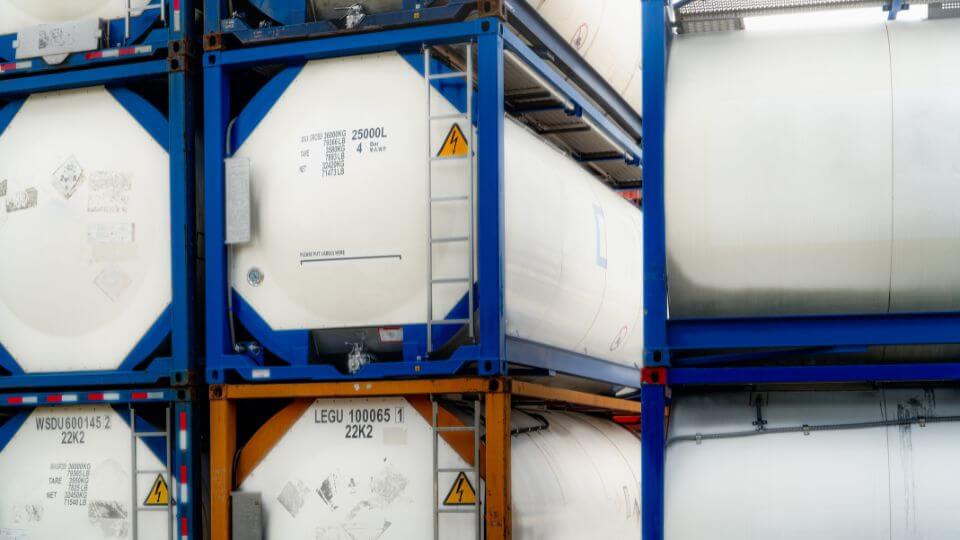

The Complete Guide to HAZMAT Table (HMT)
The Complete Guide to HAZMAT (Hazardous Materials) Table Home > Blog > The complete guide to the HAZMAT table Hazardous materials (HAZMAT) play a vital
Logistics is one of several sectors and businesses that are being transformed by data analytics today. In fact, logistics is an excellent use case for data due to the complicated and highly variable nature of this industry and the intricate design of the supply chain. For the advantage of logistics and shipping organizations alike, valuable insights gained from data analytics in transportation help the industry players to optimize routing, streamline manufacturing operations, and provide transparency to the whole supply chain processes.
From gaining valuable insights regarding customer satisfaction to implementing vital improvements in operational processes, data analytics in transportation enables the industry players to optimize routing, expedite manufacturing operations, and provide transparency to the entire supply chain activities, all to the benefit of logistics and shipping firms.


The role of data analytics in transportation and logistics decision-making is becoming increasingly important in today’s world. Data analytics offers better visibility into global supply chain operations, helping logistics businesses to identify new opportunities and optimize operational efficiency through data-driven solutions. This way, companies can track and monitor the performance of their vehicles, optimize routes, and identify areas for improvement.
Data analytics can also provide valuable insights into customer preferences and supply chain performance, allowing companies to make better decisions about how to move goods and services, which routes to take, and which products and services to offer. By leveraging data analytics, transportation and logistics companies can improve their operations and make better decisions, ultimately leading to increased profitability and customer satisfaction.
Data analytics is rapidly gaining importance in warehousing operations for logistics companies. Data analytics is increasingly used to track inventory levels, predict future demand, and identify areas where cost savings can be made. Data analytics can also be used to optimize the layout of a warehouse, making it easier to locate and move goods.
Additionally, data analytics can be used to identify bottlenecks in the supply chain and provide insights into operational improvements. Analytics can also be used to predict customer behavior, allowing logistics companies to tailor their services to meet evolving customer needs.
Keeping operations streamlined enough to maximize earnings and minimize costs is one of the main problems faced by logistics organizations. Since drop-off times must be taken into account to ensure that all products are transported within the given timeframe, routing for last-mile deliveries is particularly challenging.
By giving the drivers real-time information on traffic conditions and receiver availability, they have the flexibility to change their routes as necessary. They can view in real-time the optimal routes to travel, the clients it makes far more sense to service first, and the expected delivery times for customers, all thanks to data analytics in transportation made available by advanced mobile technology.
The most efficient routes and times for delivery are chosen with the assistance of real-time GPS coordinates, weather stations, road repair data, fleets, and people timetables automatically fed into a database reviewing historical trends. Logistical data analysis is also being used in the logistics industry to enhance delivery efficiency and give clients real-time order tracking. Customers anticipate quick shipments that are simple to follow. Continuously refining these operational features through data analysis results in higher-caliber partnerships and loyal clientele.
The future is in metrics, KPIs, and forecasting. These components enable continuous performance monitoring and the detection of bottlenecks based on real-time data. Managers have the knowledge they need to take action as soon as this data unearths picking rate problems, picking procedure delays, or when certain products are missing from shipments.
Additionally, demand spikes for any commodity, at any moment, at the correct location, and at the right price, may be predicted using predictive analytics. Knowing how client demand will change makes it easier to plan for and foresee drastic swings in demand, inventory shortages, and cost savings.
Business success depends on the optimal allocation of resources. To maintain efficient logistics operations, management must make sure there are sufficient vehicles of the correct size and load capacity in addition to monitoring employee shifts. In the past, executives would rely heavily on historical data that was readily available or, worse, on their gut feeling based on prior experiences. Customers in the present day are extremely demanding, so traditional business practices without support from transportation data analytics and technology will only take companies so far.
Integrating data from many functional areas, including people, transportation dispatch, and distribution networks can give a comprehensive picture of the resources required during a specific time period. The efficient deployment of assets to match the anticipated demand and workload in real-time is made possible through improved visibility into inbound cargo, customer delivery times, vehicle accessibility, and employee shift schedules.
In supply chain networking, the interaction between inland logistics as well as shipping is vital. Delays and accidents can cost logistics companies a significant amount of money and could even have an immediate effect on the price of the products or services that end users will buy. It is necessary to have proper systems in place to stay on top of crucial information so that logistical decision-making with data analytics can be made in a timely manner given the numerous elements to be taken into account, such as the ship’s time of docking at the port and the accessibility of vehicles for long excursions, among others.
Vehicle dispatching, hence, can be made more efficient with data to guarantee availability and timeliness. Logistical data analytics helps automate the scheduling and dispatching of land vehicles as well as the estimation of shipment arrival timeframes. The effectiveness and precision of scheduling can be further increased by enhancing data insights and including information on path traffic conditions and weather.
Most businesses have access to vast data resources today, but they frequently do not understand how to utilize them to generate profit. Data analytics can help businesses identify key trends and patterns in their supply chains, track their performance over time, and identify areas for improvement. Companies can also analyze customer data to understand their purchasing habits and optimize their delivery routes.
Given the boundless potential, it is quite understandable why moving forward data analytics in transportation can be intimidating. When you work with a reputable 3PL logistics provider like Logos Logistics for your logistics needs, we help you drive growth, lower risk, and optimize your transportation workflow. With the power of data analytics, transportation and logistics companies can make smarter decisions and stay competitive in the ever-changing transportation and logistics market.
Contact us for a free quote on how we can use Big Data to help your logistics decision-making.


The Complete Guide to HAZMAT (Hazardous Materials) Table Home > Blog > The complete guide to the HAZMAT table Hazardous materials (HAZMAT) play a vital


10 Common Hazardous Materials (HAZMAT) in Logistics Home > Blog > 10 common hazardous materials (HAZMAT) in logistics In the complex landscape of logistics, ensuring


11 Different Types of Cargo Containers & Their Impact on Shipping Home > Blog > The 11 different types of cargo containers and their impact
© 2008-2024 Logos Logistics. All Rights Reserved, Logos Logistics Inc.